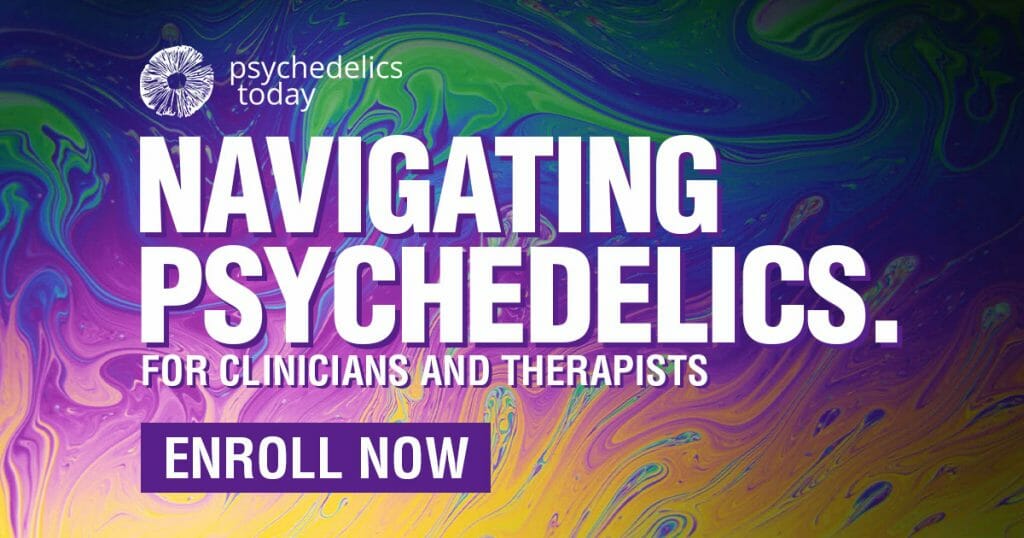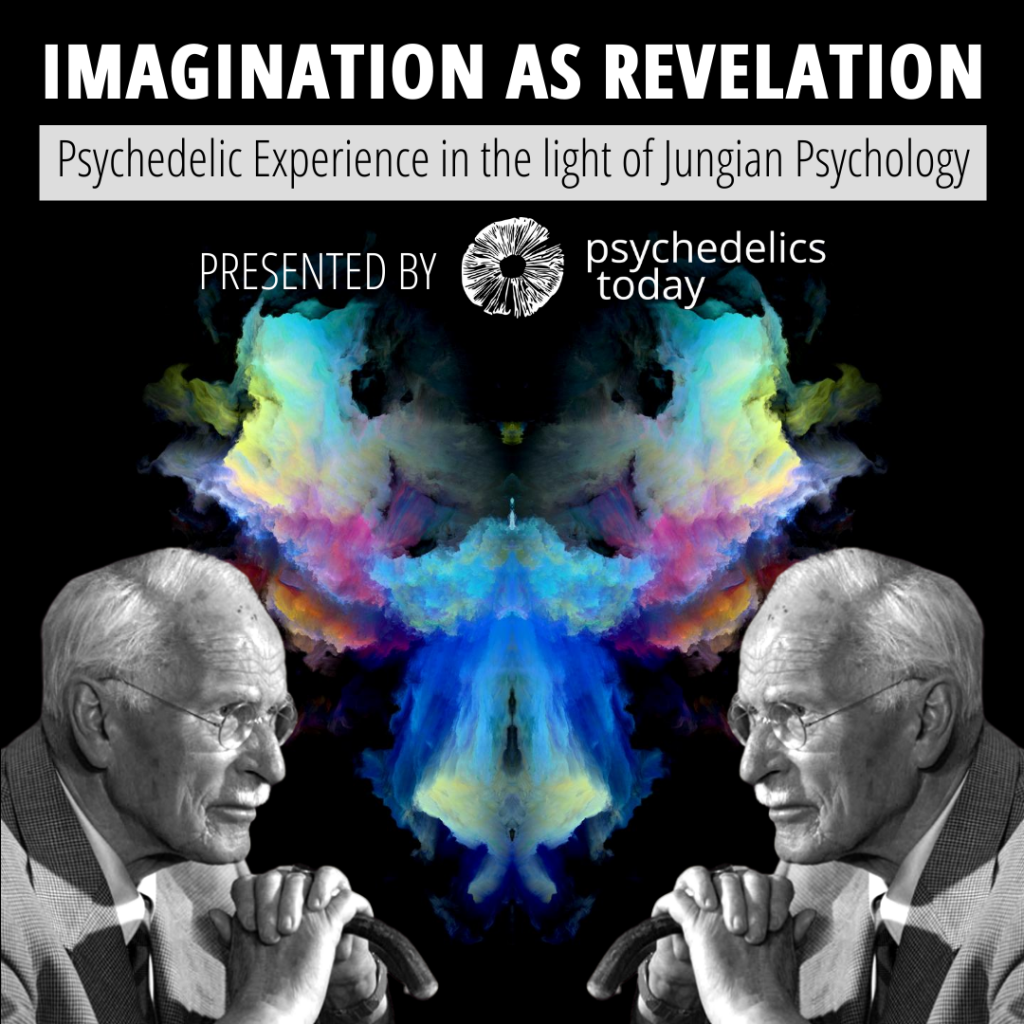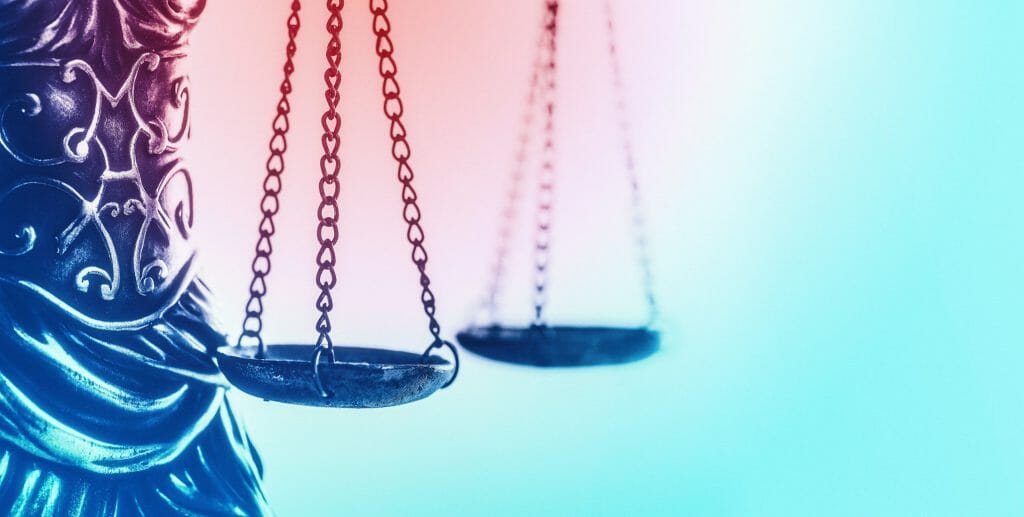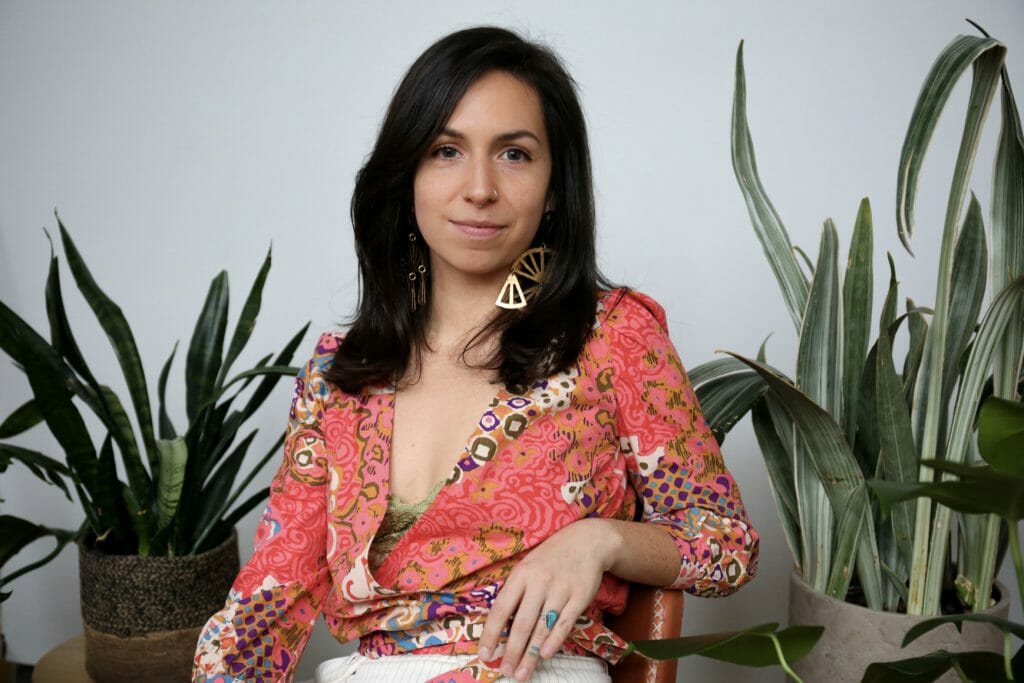By Rebecca Martinez
The psychedelic space has an abuse problem, but how do we resolve it? Community accountability and transformative justice can help.
In the past few years, the global psychedelic community has weathered countless ruptures as patterns of problematic behavior have come to light. While calls for accountability have been increasing, we have yet to establish frameworks and processes that support it. Such are the challenges of a decentralized, citizen-powered movement: It is as diverse and situational as the psychedelic experience itself, and accountability is not a one size fits all process. The ways we approach massive, powerful institutions often look very different from the ways we approach those in our immediate social groups.
We have seen sexual assault in underground healing environments and leaders aligning with sexual predators. We’ve witnessed the shameless commodification of ceremonial practices and silencing of voices championing equity and diversity. We can also be sure that more issues are just around the bend. They are bound to surface as the movement grows and we attempt to create practical systems for accountability that can keep up with this rapid expansion.
The mainstream paradigm of accountability is rooted in the legal system. It is centered around the concept of penalty—simply put, if someone breaks the law or a societal contract, they will be punished, often by being removed from community or being made to experience the same pain and suffering they have caused. Justice is seen as a contract between the individual and the state, and harm is defined by legal institutions. It can be static, rigid, and lacking nuance. Among the many issues with this punitive model is the simple fact that the needs and experiences of survivors and those impacted are often an afterthought. In addition, punishment does little to prevent further harm, rehabilitate the person responsible, or address the underlying conditions which contributed to the event.
If we don’t dedicate ourselves to a new vision of accountability while the psychedelic movement is still relatively small, the fallout and damage could be much greater. We are in a world where cancelling and punishing people is our main choice for dealing with harms. If we want to be a culture built on the cornerstones of healing and relationship, we will need to find ways to embody these values in our approach to accountability.
By modeling clear, compassionate, and dialogue-based systems for accountability, we can prevent the invasive seedlings of harm from growing into weeds which choke out the entire garden of psychedelic healing.
The Opportunity
It’s high time for us to circle up, from our smallest pods to our largest public forums, and form agreements on how we are going to show up as a movement to destigmatize and create safer access to psychedelics. What are our core values, and how do we bring them to life? How do we, as a global community, intend to prevent and respond to situations of harm and abuse? We need to define our agreements and put them into practice at home. Whatever we create together in the microcosm will determine what takes shape in the large scale later on.
In the past few years, I have been involved in many behind-the-scenes conversations where I have been earnestly warned about problematic individuals and organizations in the psychedelic scene. I have been given firsthand accounts of behaviors ranging from ethically questionable to outright violent and predatory.
Perhaps this secretive dynamic is a reflection of the social contract around psychedelics. While the space is splintered, we share a broad collective cause—one that is just beginning to gain legitimacy in the eyes of the government and general public—and thus, we have a call to protect one another. This is a community which generally understands the potential legal and reputational ramifications of outing anyone who is a part of the psychedelic underground for bad behavior. But are we more loyal to the movement for psychedelic access itself, or the people who have been harmed within it?
Over and over, when I hear these accounts, the same questions arise for me:
Have we brought these concerns to the person in question? Is mycelial, grapevine-style dialogue the best way to establish safety amongst ourselves? There must be a better way forward which could actually interrupt patterns of damage and promote reconciliation. I fear that our current non-confrontational approach allows problematic behavior to continue due to our own unwillingness to address it head on.
In addition, each person with this insider knowledge must now carry the burden of sorting out what to do with it. Should I warn everyone I know? Should I approach the person directly? How do we get to the truth of a situation, and at what point (if any) should these truths be made public? Who gets to decide? When should someone be muted, removed from a position of leadership, or barred from participating in community? How do we set terms for their reentry?
These are difficult questions that we need to explore together and within ourselves. Though it is more laborious and does nothing to satisfy our own sense of self-righteousness, there are ways to address problems without calling someone out, cancelling them, or permanently destroying their reputation. The challenge is that each situation is different, so developing a formulaic approach for an entire movement is impossible.
It’s no secret that psychedelics are going mainstream. We have an opportunity to set the tone and shape the culture of this movement by how we conduct ourselves amongst one another, how we cultivate community and how we organize our institutions and advocacy efforts. By modeling clear, compassionate, and dialogue-based systems for accountability, we can prevent the invasive seedlings of harm from growing into weeds which choke out the entire garden of psychedelic healing.

Accountability First Steps
Recently, North Star, a new psychedelic nonprofit, launched the first widespread code of ethics for psychedelic practitioners and organizations, based on input from 100 stakeholders in the field. The seven principles in the North Star pledge are:
- Start within
- Study the traditions
- Build trust
- Consider the gravity
- Focus on process
- Create equality & justice
- Pay it forward
These values can serve as guiding lights and a first step toward a culture of accountability. The problem with voluntary creeds like this one is that they are mostly symbolic in nature. Without a clear way to vet those who are self-associating with the pledge, there is no way to know whether someone’s public commitment is deeply rooted or performative. We don’t actually know what an individual or an organization is made of until they have been involved for a while and have been given space to act, connect, contribute, and most likely, be under a little pressure.
Ultimately, the nature of accountability is relational. The act of uncovering messy truths and the challenging processes of responsibility often happens at kitchen tables and park benches, not board rooms and convention stages.
Fortunately, we don’t have to reinvent the wheel. The psychedelic community may be new to the justice discussion, but leaders from other disciplines such as Emergent Strategy, mutual aid networks, and prison diversion programs have spent many years engaging with the messy, daily practice of addressing and repairing harm. We would be wise to learn from these leaders. If we do, the psychedelic field will be better off for it.
What Is Accountability?
The basis of accountability is simple: When damage has been done, there is a healing process that needs to take place. At its most basic, accountability is a cycle of harm, recognition, and repair.
But before we can talk about holding one another accountable, it’s essential that we each develop the practice of holding ourselves accountable. It’s hard, lifelong work to take responsibility for our actions and their impacts; it requires us to labor through our own barriers to receiving critique. Only once we get past our own denial, fragility, and excuses can we reach a place of acknowledgment and growth. While reconciliation isn’t always guaranteed, self-responsibility can open the door to remaining in community after harm has been caused. This long-term work rarely happens in isolation—it happens in our homes, partnerships, friendships, professional collaborations, and within the larger movements we champion.
Accountability takes many different forms.
Self-accountability, which is about as sexy as steamed kale, begins with identifying our values. It asks each of us to recognize that we live in an interconnected world in which our actions have immediate and indirect impacts. Once we have clarified our value system, we must then cultivate the practice of tracking whether or not our behavior is aligned with these values. But we all have blind spots; this is why we need community.
Interpersonal accountability can be enticing. On one hand, there’s some primal part of us that feeds off of scandalous news when someone in the community goes rogue. There is an impulse to see folks who are doing damage taken down; perhaps witnessing these takedowns makes us feel superior. Maybe punishment creates an illusion of safety, or at least, demonstrates that the community has boundaries and agreements we can all lean on. The responsibility here is to ensure that before we expend energy confronting others about their behavior, we check ourselves. We need to ask: “Am I the best person, and is this the best time, to call this person in? Is there inner work that I am responsible for at this moment? And importantly, am I ready to participate in a process without doing further damage?”
Then there’s institutional accountability—the fantasy we can’t seem to get enough of. Mainstream media publishes pieces vilifying Compass Pathways and ATAI Sciences, and we eat it up and express our outrage on comment threads and podcasts. Perhaps this is because it is easy to see large corporations as faceless, evil monsters to rail against. But again, we have to go deeper—who is leading these organizations? What worldviews and assumptions are they operating under? What wounds might be beneath the problematic behaviors we love to hate? And importantly, what are the ugly parts within ourselves that are so uncomfortably reflected in their behaviors?
Within a movement like the psychedelic resurgence, accountability becomes a long term process of choosing to stay in relationship. We set out to do this while understanding that as flawed humans, we will certainly hurt one another and we need clear agreements, safety parameters, and systems for repair. While it isn’t always safe or possible to keep people in community who have done harm, it is a pursuit which can create more opportunity for long-term healing than the scorched-earth mentality of punishment and eradication.

The Transformative Justice Approach
When reimagining the idea of safety within community, there are two terms that are often used interchangeably: restorative and transformative justice. While they are related, they have key differences.
The United Nations Working Group on Restorative Justice (RJ) defines it this way: “A process whereby parties with a stake in a particular offense resolve collectively how to deal with the aftermath of the offence and its implications for the future. In essence, we seek to repair the harms caused by crime and violence.” The process seeks to restore the conditions that were present before a harm took place. RJ efforts often work in tandem with local judicial systems. Check out these firsthand accounts of the accountability process from Restorative Justice Victoria.
Transformative Justice (TJ) goes even deeper. It seeks to address the context in which harms occurred and, through a community-centered approach, catalyze long-term shifts in the very fabric of society. This can serve to not only prevent harm, but to create conditions that lead to healing and thriving, as well.
For years, transformative justice efforts have been a part of the movement toward building healthier, more intact communities and reducing the reliance on policing as our only means of creating safety. It is a holistic approach which focuses first on resourcing the victims/survivors of harm, who are often erased within the punitive justice system. Rehabilitating the person responsible is a secondary consideration, in the spirit of prevention. In addition, it holds an eye toward the source and root cause of the harm, rather than treating individual situations as isolated incidents. This enables us to make systematic shifts which can ultimately ripple outward and help reshape the culture of our communities as a whole.
Transformative justice understands that the harms we inflict upon one another are the downstream effects of larger dysfunctions within our society. They may stem from a culture shaped by scarcity, disconnection, domination, and generational trauma. In order to truly prevent harms from repeating, we have to transform the underlying issues and the belief structures that uphold them.
Interrogating our community standards and assumptions, strengthening interdependence, and addressing the root causes of harm are at the heart of transformative justice.
Benefits of the Transformative Justice Approach
- Enables intervention before small harms and patterns escalate into major problems
- Centers the needs and experiences of survivors or those impacted
- It enables all involved to increase their capacity for clear communication, generative conflict, and ownership of responsibility
- It creates opportunity for the person who has done harm to reflect on and understand the impact of their actions
- It requires an actionable plan for repair
- It cultivates greater safety, resilience and trust within the community
Limitations of Transformative Justice
- Accountability processes sometimes happen months or years after an incident has occurred
- Defining repair is much harder when death or major damage has occured
- Results are slower and more systemic (we have to be invested in the long view)
- Confrontation can be extremely uncomfortable
- Those who are confronted cannot be coerced into accountability processes
- Making amends doesn’t often have a clear timeline or resolution
- Community involvement over time is required
Potential Misuse of Transformative Justice
- People who aren’t committed to their inner work may harness the language or tools of accountability in an attempt to control situations or deflect culpability
- People may repeat serious harms over time and rely on the optics of transformative justice to save face when held accountable
- Those invested in upholding existing power structures may discourage efforts toward transformative justice, as it is rooted in systemic change
What If We Are All Responsible?
There is a tempting, self-righteous satisfaction in punishing or cancelling people we view as problematic. Part of why punitive systems exist within our society is because they allow us to rely on a convenient binary. When we frame complex situations in right/wrong, good/bad, or involved/not involved, we get a free pass to look the other way. Effectively, we absolve ourselves of the nuanced and laborious process of conflict transformation.
Community based approaches to healing can have major benefits, but they require work. If the goal of accountability is to interrupt cycles of harm and create long term vitality in our communities, we must also work to create healthier systems at the root level. This reimagining takes all of us. In an interview with the Barnard Center for Research On Women, Esteban Kelly, co-founder of AORTA (Anti-Oppression Resource & Training Alliance), put it this way:
“[Transformative justice] distributes the culpability a bit. Which isn’t to say it is even, but everyone holds some amount. What environment enabled the silencing to go on, such that this pattern was able to continue until a crisis? What allowed things to escalate? What were the subtle hints around male supremacy, sexism, white supremacy, or different forms of class power that gave people hidden messages that this was acceptable or that we’re not going to intervene?”
Steps of Accountability in Transformative Justice
Transformative justice acknowledges that there are no quick fixes to complex problems. Calling someone in is a first step, but there is no way of knowing how they will respond. Given the complex dynamics which can often lead to damaging behavior, it is possible that someone will refuse to participate in peacemaking efforts. If they are willing, however, a loose framework can look this way:
- Identifying the harm: A problematic behavior or pattern is identified, either by the individual, someone affected, or the surrounding community.
- Calling in: The person in question is called in. (Learn about the differences between calling in and calling out here.) If you are called in, it may take some time to wade through your initial reaction and emotional activation, but ultimately, see if you can receive the call to accountability as a loving act. You are being invited to change a behavior instead of being rejected because of it.
- Taking responsibility: Feeling badly or saying sorry isn’t enough here. True accountability requires that we take responsibility for our actions and identify where we had freedom of choice when we may have felt we had no options.
- Commitment to repair: The person responsible dedicates themself to repairing the harms that were caused.
- Clarifying agreements and actionable steps: Ideally, those impacted will be involved in the decision making process around what repair should look like. The more specific you can be, the better. For example, if the person responsible is in leadership, do they need to be asked to step down from their platform for a set period of time? If someone has harmed another person in the community directly, do they need to help cover the cost of healing services?
- Following up and ongoing relationship: This is where the rubber meets the road. Change takes time, and the process is not linear. To fulfill agreements and develop new habits, people need to be held in community while also keeping those who have been harmed safe.
The above model is not a hard and fast formula, but more of a roadmap through common situations. Sometimes, harm is so deep and shattering that basic steps toward repair may seem simplistic. For example, what if someone dies during an underground medicine retreat or a clinical trial? Worse, what if there are efforts to conceal or rewrite the narrative of what has happened? When facing situations where loss of life has occurred, the family of the deceased must be heard and empowered to define what efforts toward repair feel supportive on their own terms.
But, what if the person in question refuses to accept responsibility? What if the survivor or person impacted has no interest in being a part of an accountability process? Can Transformative Justice principles still serve when the process is less tidy?
I spoke with Esteban Kelly about his perspectives on creating a culture of accountability within movements. In addition to being a co-founder and worker-owner of AORTA Co-op, he also spent fifteen years as a volunteer member of Philly Stands Up!, a community-based transformative justice collective which worked directly with people who caused harm in sexual assault situations. Through PSU!, Kelly amplified the lessons of transformative justice to help local communities navigate scenarios of interpersonal harm and healing.
“If someone won’t be accountable, we are not going to do something coercive, contribute to call-out culture, or publicly shame them. We ask survivors, please don’t do a public take-down of this person; we’re not calling to cancel people. Instead, we might suggest that communities mute them or say they should not be platformed, but we ultimately want to draw people back into networks of trust. We want to direct resources and coaching to them so they are more capable of the change those around them know they need.”

Developing Muscle Memory in the Accountability Process
Accountability is a process, not an end point we arrive at. It requires acknowledging and taking responsibility for the harm that’s been caused, making amends however possible, and taking steps to change behavior so the harm does not continue. This requires that we develop skills in introspection, communication and sitting with discomfort. It requires us to ask, “What are the actions I can take to make things as right as possible, given that I can’t go back and undo what was done?”
Theoretically, these practices could transfer seamlessly into the psychedelic community. Is this a utopian vision, or is there hope for a lasting, truly just psychedelic movement that doesn’t self-destruct during its ascent? That depends on how committed we are to the process of change, first within ourselves and our immediate circles. Kelly offers up the long view:
“This rhythm of theory, action, and reflection has to be iterative and constantly evolving. What are we trying to do at a societal level if we can’t even figure it out in our own communities? These small exercises are maps and instructions for how we can reprogram things at a larger scale.
“Transformative justice doesn’t really make sense until you are involved in testing it out and applying it in the laboratory of your life. Testing it out in low-stake situations will help these concepts make sense. Then, when the going gets tough, you have muscle memory to handle more difficult scenarios.
“There’s a certain role that everyday facilitators and community organizers can play. Right now, that is where the gap is. So, how can we rise to the occasion ourselves to take these skills that seem professionalized and translate them into everyday skills? Transformative justice is not about running social services through non-profits and institutions. Those may be effective for other things, but there’s something else that can happen in a less codified way, in these intimate TJ settings, and that’s the change we’re trying to achieve.”
In other words, change begins at home. We’ve got to redefine justice on a personal level and learn to be accountable for ourselves and our immediate circles before we’re ready to make institutional change. Here are a few places to start:
Accountability: What Each Of Us Can Do Right Now
- Invite mentors and elders into your life
- Commit to a practice of brutally honest personal reflection
- Get in touch with your body. Notice what comes up when you feel guilty, ashamed, threatened, accused, or misunderstood. Notice these emotions in minor situations and develop tools for managing them
- Practice rupture and repair cycles in personal relationships
- Learn how to apologize effectively
- Develop capacity for uncomfortable conversations
- Ask your peers for feedback
- Create a culture of radical honesty & authenticity in your relationships
- Practice following through on your commitments
- Enlist a specific set of trusted “tough love” peers to be in close proximity and call you in when needed
How do we choose the right people to be our inner circle of accountability? Kelly lays out some considerations.
“It might not be your best friend. It might be your coworker, sibling, or neighbor. It’s more about the quality of the relationship than the quantity of people. Who do you share a depth of trust with? Where are the spaces in your life where you can receive direct feedback? The broken conditions of the world can feed into our ideas of victimization and defensiveness.
“When you’re activated, you may not be able to really hear critique. But who can, despite all of this, hang in there through the worst of the hurdles you put up; to have compassion for your human experience and essentially bear hug you into accountability? Who can say: ‘Yes, you can scream, cry, yell, etc. I’m able to hear your initial round of deflection and excuses. I may or may not validate them. But now that that’s off your chest, can you get to a place where you’re able to listen? It may be weeks or months later, but I’ll be here as a support person.’”
Healing For Our Descendants
The theory of transformation is one thing; the embodied, lived experience of it is something else entirely. As many of us can attest, the cosmic downloads we receive during a psychedelic experience may be profound, but the real magic happens as we integrate these insights into our lives. The same is true for accountability: Documentaries, books, and philosophy of change are solid starting points, but they carry with them a call to integrate this new knowledge meaningfully into our lives.
Integrity begins within ourselves, then expands into our relationships, our networks, and ultimately, as an extension, perhaps even the global community. Just as raindrops fill a stream, streams feed into rivers, and rivers become the ocean, it’s impossible to separate the individual from the collective.
How long might it take to really see a shift we envision? When will accountability, rather than punishment, be the norm?
“Realistically, we probably need another… fifty years of actively changing.” Esteban tells me. “Keep in mind, we don’t just suddenly ‘REACH SCALE’. Society changes through gradual, and sometimes speedy, transformation, but even that takes time to take root.”
Fifty years! In the psychedelic context, when we talk about the medicine of ancestral healing, we’re not just talking about healing backwards in time. We’re also healing for our descendants. We have the opportunity to pass along a heritage more healed and intact than what we’ve inherited. Healing our ancestral lines while we’re still living will likely take our whole lifetimes; this is a beautiful, fundamental expression of accountability. We are taking what we’ve been given, understanding its roots and working to transform it.
We not only need each other, we also need to trust and be trusted. We can acknowledge the windows of opportunity before us, but let’s commit to the long path and remind one another of the healing vision and our deep belonging when the noise gets too loud or our shadows come out to play.
Resources:
We Do This ‘til We Free Us: Abolitionist Organizing and Transforming Justice by Mariame Kaba
Beyond Survival: Strategies and Stories from the Transformative Justice Movement Edited by Leah Lakshmi Piepzna-Samarasinha and Ejeris Dixon
AORTA.Coop or @aortacoop on InstagramFollow Esteban Kelly at @estebantitos on Twitter or @estebanitos on Instagram
About the Author
Rebecca Martinez is a Xicana writer, parent and community organizer born and raised in Portland, Oregon. She is a co-founder of the Fruiting Bodies Collective, an advocacy group, podcast and multimedia platform addressing the intersections between healing justice and the psychedelics movement. Rebecca served as the Event & Volunteer Coordinator for the successful Measure 109 campaign, an unprecedented state initiative which creates a legal framework for psilocybin therapy in Oregon. She is also the author of Edge Play: Tales From a Quarter Life Crisis, a memoir about psychedelic healing after family trauma, spiritual abuse, and police violence. She serves on the Health Equity Subcommittee for Oregon’s Psilocybin Advisory Board as well as the Board of Advisors for the Plant Medicine Healing Alliance.

